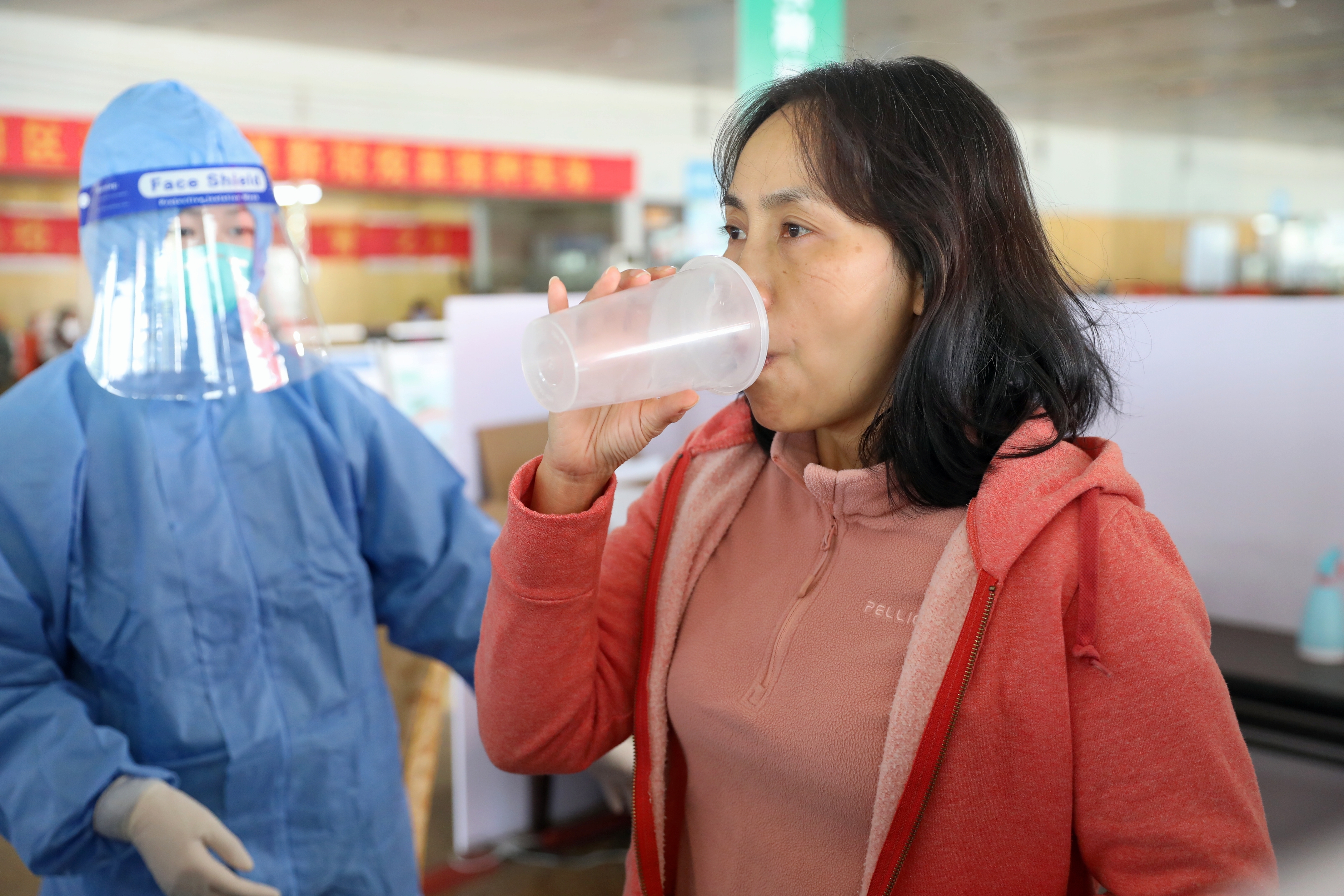People infected with Omicron subvariant XBB have been detected among imported cases admitted to the Guangzhou Eighth People's Hospital, Guangzhou Medical University. No local cases have been reported yet, according to Li Yueping, director and chief physician of the Department of Infections ICU at the hospital.
The Omicron subvariant XBB has now gradually replaced other Omicron variants and taken over as the dominant strain in other countries. It is likely that XBB and BQ.1 will infect Guangzhou's residents in the near future.

A resident receives a dose of inhalable COVID-19 vaccine at a vaccination site in Guangzhou's Tianhe District, Dec. 27, 2022. (Photo: Nanfang Daily)
The majority of patients in the current infectious wave were infected with the Omicron variant BA.5.2. Other strains, including XBB and BQ.1, were detected among imported cases, which account for a small percentage and have not undergone community transmission, said Li Feng, deputy director of the Infectious Diseases Institute of the Guangzhou Eighth People's Hospital, Guangzhou Medical University.
"XBB still infects people through the ACE2 receptors, resulting in similar symptoms caused by previous strains," Li Yueping said. Diarrhoea is one of the ten symptoms of COVID-19 infection. Currently, there is no evidence to suggest that XBB strains are more likely than other strains to cause severe diarrhoea or other clinical manifestations of the gastrointestinal tract.
Do residents who have recovered from COVID-19 infection acquire immunity to XBB and BQ.1? How can residents distinguish reinfection from "re-positive"? Li Feng shared his answers to these questions.
Genetics and vaccination may explain negative cases
Theoretically, everyone is susceptible to COVID-19 infections. However, some people are not infected with the novel coronavirus, which can be attributed to their genetic background, vaccination, and preventative measures they have taken such as maintaining social distancing. Nonetheless, not being infected with the virus now does not mean that they will not be infected in the future.
Symptoms will be milder even if reinfection occurs
According to research, after BA.5 or BF.7 infections, the cross-protection against the BQ.1 variant will weaken due to mutations.
Therefore, individuals who have recovered from diseases caused by BA.5 or BF.7 may experience diminished cross-protection against another Omicron variant, XBB, which is derived from the omicron variant BA.2. However, the cross-protection doesn't go away completely.
Immunology explains that neutralizing antibodies (NAb) serve as the "gatekeeper" after infection by rejecting known viruses. NAb provide excellent protection for people when viruses seldom mutate. Greater virus mutations, however, have the potential to trick the NAb and successfully re-infect people.
In order to prevent the virus from spreading further in the body, virus-specific T lymphocytes target and destroy infected cells rather than directly attack the virus itself.
T cells are generally recognized to have a more long-lasting immunological memory. In this aspect, they can protect people against XBB and BQ.1 infections. Patients who become reinfected may experience milder symptoms and faster recovery rates. As a result, even if the virus returns, the symptoms will be less severe and the viral infection will clear up more quickly.
Differences between reinfection and "re-positive"
Antigen tests at home help residents to quickly distinguish "re-positive" from reinfection. After one or two weeks of full recovery, residents may have relapsed if they test positive for three days in a row. "Re-positive" is generally difficult to detect, and even if it is detected, it will not be continuous.
In fact, there are big differences between "re-positive" and reinfection.
Firstly, from the perspective of pathogenesis, "re-positive" results from delayed clearance of the remaining virus in patients' bodies, while reinfection refers to being infected by another source of coronavirus after recovery, which comes from outside.
Secondly, "re-positive" and reinfection are different in terms of timing. "Re-positive" usually happens within two weeks after recovery from COVID-19. People may test positive in PCR tests due to viral fragments.
However, reinfection usually occurs a few months after recovery. Healthy individuals may be infected for a second time when their immune systems are less strong. New variants have the ability to break through the immune protection produced after the first infection.
Last but not least, the symptoms differ. "Re-positive" individuals require no medical treatment, for they have already gotten better. But reinfected patients may suffer illnesses again due to a full cycle of infection.
Author | Hannah, Riz Zhang (intern)
Editor | Wing, Nan, Will, James
















